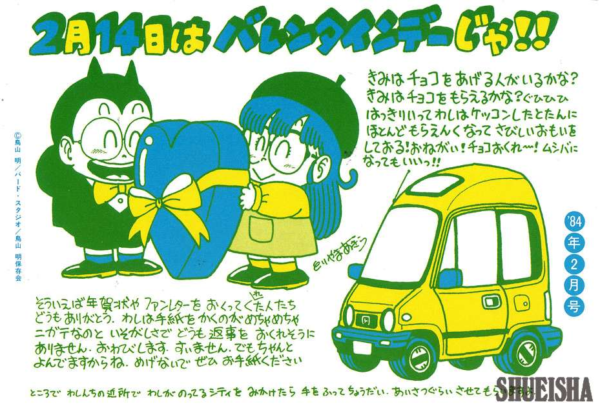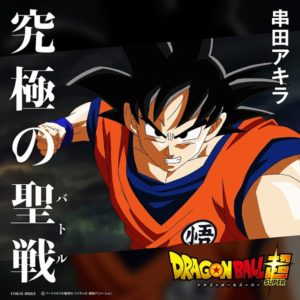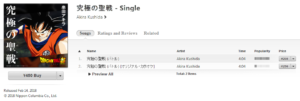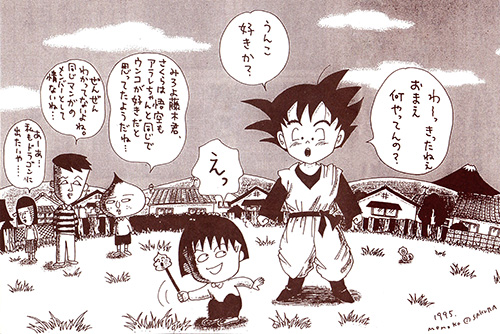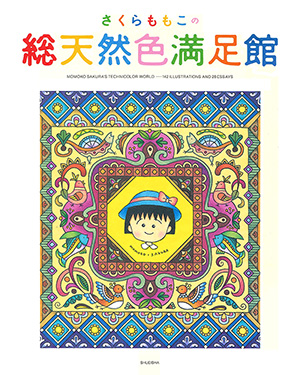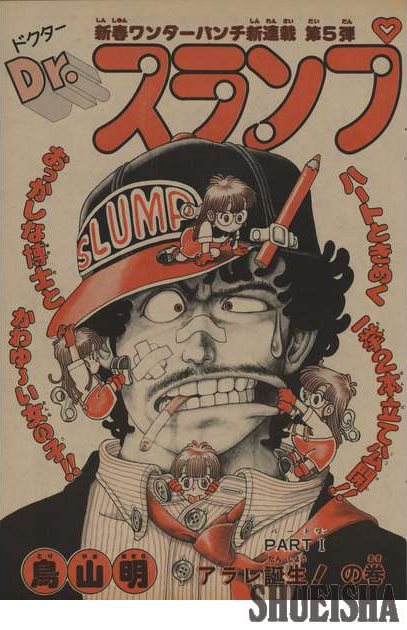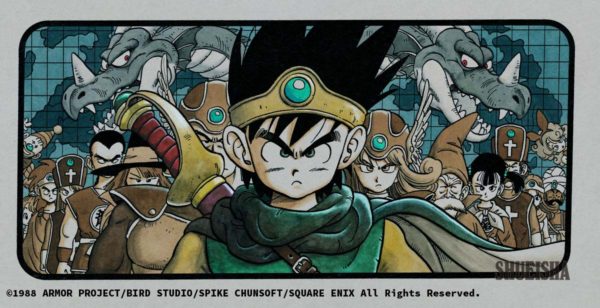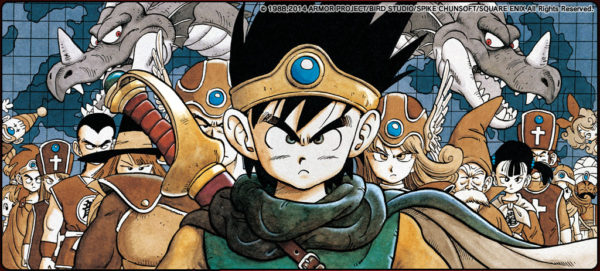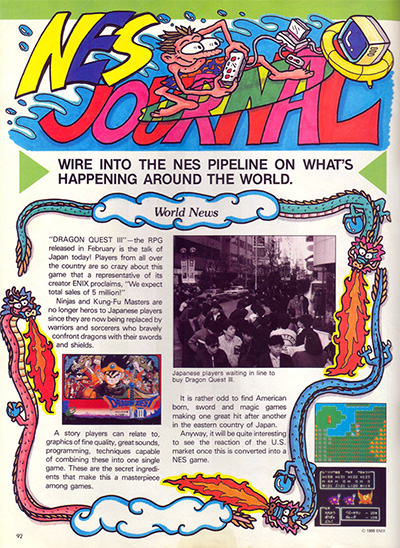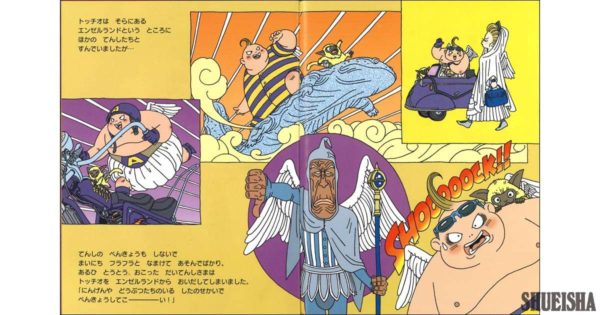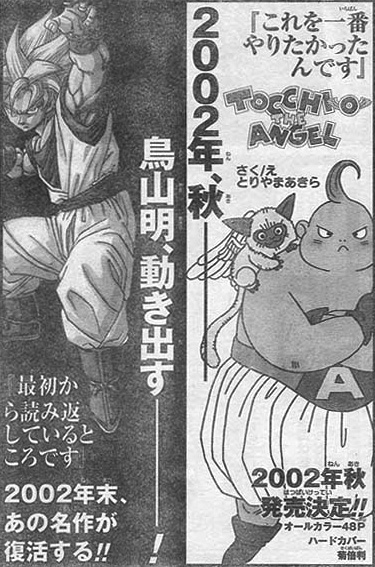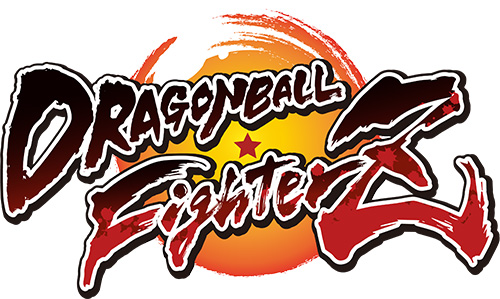The official Dragon Ball website’s eighteenth entry in “The Nearly Complete Works of Akira Toriyama” — an on-going series highlighting rare and important pieces of the author’s work over the years — is one of three main color drawings provided by Toriyama for the production of the anime-only Dragon Ball GT television series, which ran from February 1996 to November 1997 spanning 64 episodes and one television special.
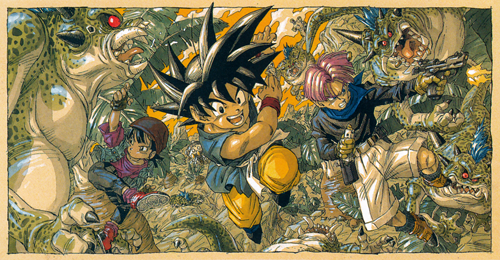
Two of these images were printed in the 1995 No. 52 issue of Weekly Shōnen Jump, and were later included in the seventh Daizenshuu and the first of the two Dragon Ball GT Perfect File volumes. The first shows the gang on a planet labeled “Mommath”, hiding behind a giant glass bottle as giants curiously check out their ship; Planet Mommath and the giants appear in Dragon Ball GT episode 6. The next picture shows them on a desert planet named “Kahra”; this picture strongly resembles Planet Ruhdeze, seen in Dragon Ball GT episode 16.
Finally, Toriyama produced a third GT picture — the one cited here by the official website — for a calendar included in the 1996 No. 3-4 double issue of Weekly Shōnen Jump (released in late December 1995); this one showcases Goku and company beating up a bunch of aliens on a mysterious planet, none of which were actually used in Dragon Ball GT. Perhaps most notably, Trunks is featured with a gun rather than, say, a sword (as would be seen in the Dragon Ball GT opening theme and the opening sequence to Dragon Ball: Final Bout on the PlayStation).
A few months later, in the 1996 No. 13 issue of Weekly Shōnen Jump, Toriyama contributed a single-page bonus comic — “Dragon Ball, If You Please” — discussing his taking a break from serialization, and his thoughts on the upcoming 10th anniversary film as well as Dragon Ball GT.

As for Dragon Ball on TV, I believe that the new series Dragon Ball GT, which I didn’t draw, will have already started by the time this magazine comes out. I still haven’t seen any of it yet, but I’m both looking forward to and worried about what sort of developments there’ll be… I think if the story progresses at a brisk pace while also being leisurely, I have high hopes for it.
In his introduction for the fifth Daizenshuu in November 1995, Toriyama touched on the upcoming Dragon Ball GT TV series as well:
The Daizenshuu this time around covers the second half of the Dragon Ball anime. Come to think of it, apparently the TV series is going to continue for a little bit longer, as a brand-new story not present in the original. It seems well thought-out and promises to be interesting; or at least that’s what I gather from the rough scripts they’ve shown me, which give a broad outline of how it’ll be. From now on I can be just like everyone else, simply watching the TV broadcasts at home and wondering with bated breath what on Earth will happen next. I’m looking forward to it, and my thanks go out to all the staff.
Toriyama also provided input on the series’ title, its logo, and its main character designs (including their spaceship) — check out the Dragon Ball GT sub-section of our “Toriyama’s Contributions to the Anime” page in our “Production Guide“. Toriyama mentions these in his introduction to the 2005 Japanese Dragon Ball GT “Dragon Box” DVD release, where he also included a sketch of Super Saiyan 4 Son Goku:
My sincerest gratitude to all those who bought this Dragon Ball GT DVD box.
Being a lazy bum by nature, I was absurdly happy when I managed to safely finish up Dragon Ball‘s serialization, and finally be released from Deadline Hell. The TV anime people wanted to continue for just a little bit more, but I just couldn’t do any more than that… And so, I left the Dragon Ball anime completely up to the anime staff, story and all. That was Dragon Ball GT.
In car lingo, GT means “Gran Turismo”: a fast, high-powered car, in other words. But in this case, I had GT mean “Grand Touring”, a great journey, since the scenario was that they’d be running around the universe.
For GT, all I did was just come up with the title, design the initial main cast and some of the machines, and also do a few images. However, I was able to rest easy handing things over to the excellent staff, who had continued on Dragon Ball for all this time. In particular, the animator Nakatsuru-kun is amazingly skilled, and mastered the peculiarities of my drawings in no time at all, to the point where there were even times when I couldn’t tell whether I had drawn a certain character design, or if he had. For instance, one of Nakatsuru-kun‘s designs was “Super Saiyan 4”, which appears in GT, and the picture above is a portrait that I drew looking off it. Did I draw it well?
Dragon Ball GT is a grand side-story of the original Dragon Ball, and it’ll make me happy for us to watch and enjoy it together.
